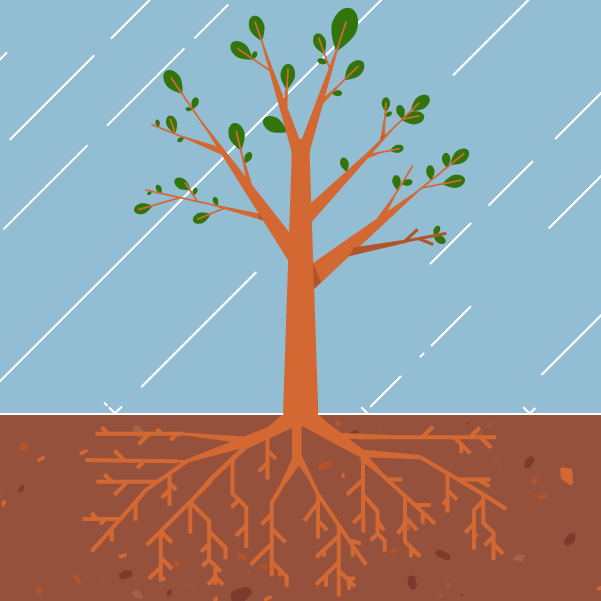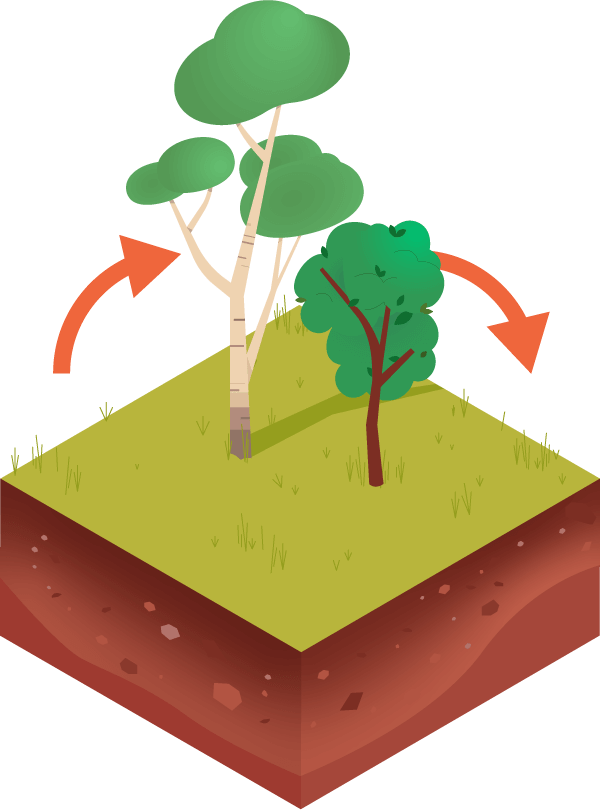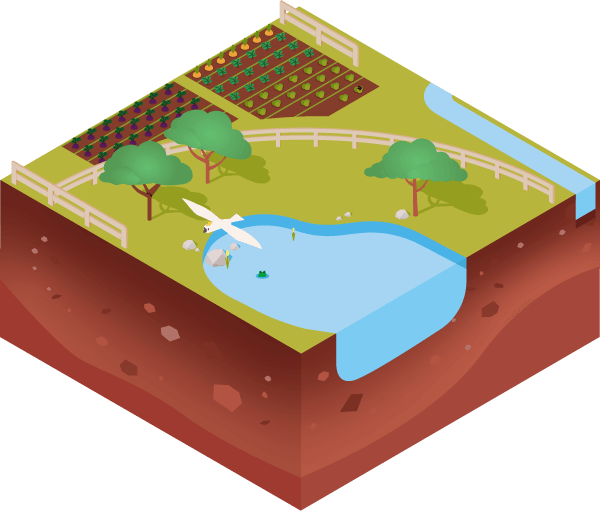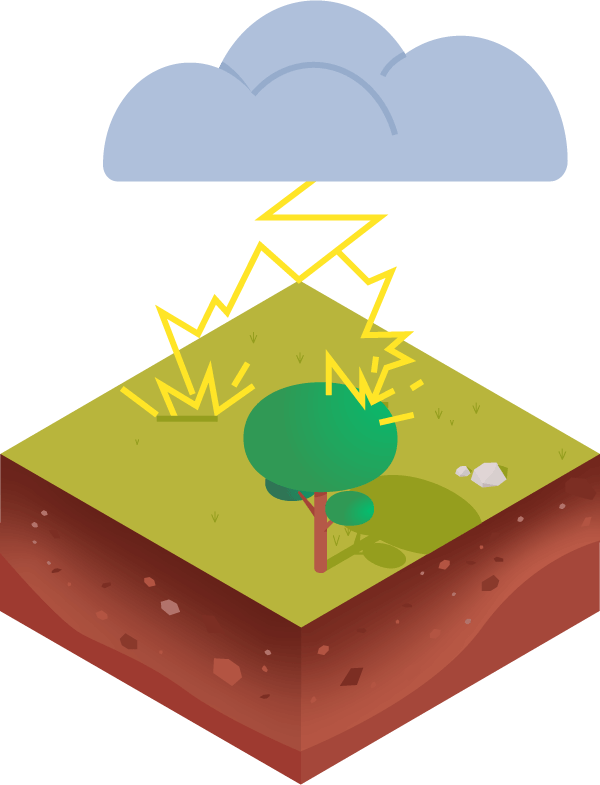RAINFALL
It’s not just what falls from the sky, it’s what you do with it
Every drop that falls is precious. But that does not mean it’s best to capture it all in tanks or dams – regenerative farmers seek to store rainfall in the soil. Storing water in soil is not only better for the soil, but also good for waterways.
When raindrops fall on bare soil, they smack the soil particles together. Each drop, rather than flowing into the soil, helps to create a thin, packed crust which repels water. Soils lacking in structure and organic matter, and with such a crust, are called hydrophobic – they repel water, making the problem worse. To prevent this, and to slow evaporation rates down, regenerative farmers keep the soil covered at all times.
To store water in the soil, focus on building a soil structure that is open enough that rain can penetrate, with lots of organic matter, microbes and growing plants init to hold water like a sponge.
THE SMALL WATER CYCLE
A huge and complex system, powered by the energy of the sun
The hydrological cycle,or water cycle, is a global system by which water circulates. Water evaporates from oceans, is carried in clouds over continents, condenses and falls as precipitation, which flows to the ocean again.
It’s a huge and complex system, powered by the energy of the sun. The water cycle defines what we know as climate. Changes in the hydrological cycle affect global weather.
Just as there are local microclimates, there is also a ‘small water cycle’, which is the local or regional effect a large living mass of trees can have on the air’s water vapour (relative humidity). All plants release water vapour through evapo-transpiration. This moist air is ‘held’ in place by the tree canopy, creating conditions that help rain, dew and fog to form – all of which can positively benefit plants and add moisture to the soil.
The small water cycle is a local affair, and it can be encouraged by mass plantings, creating and maintaining a beneficial microclimate and encouraging biodiversity.
WATERWAY HEALTH
Waterways are biodiversity hotspots
Animals, birds and insects come to waterways to drink and feed; plants draw on moisture from the waterway as seasonal fluctuations dictate many species’ lifecycles.
When livestock are given unlimited access to waterways, they trample diverse plants, their hooves erode and compress the moist soil of the banks, and their grazing can strip off too much of the plant layer, leaving soil vulnerable to erosion by wind and water in flood events.
Waterways are subject to problems such as growths of algae or run-off from agricultural chemicals, animal manures and topsoil erosion. These situations change the food and oxygen available in the water and can cause fish and water organisms to die in large numbers.
To regenerate waterways, farmers can fence off waterways such as streams, revegetating where needed with endemic species of plants. Management of waterways and the riparian zones around them can mitigate against some of the adverse effects of floods. Biodiversity blooms as habitat extends back from the water’s edge into a thick band of moist, biodiverse vegetation – a good microclimate to surround any farm.
EXTREME WEATHER
A changing climate means more storms
Long-term global changes in our climate make it less predictable. While more storms may seem like a chance for more water, the evidence for extreme weather events tells a more destructive story:
-
Increase the water-holding capacity of soil.
-
Reduce evaporation and prevent erosion.
-
Use plants to ‘hold’ water at the right level/s below ground.
-
Limit run-off and leaching into waterways.
-
Increase tree cover to provide shade and create sheltered areas or microclimates.
-
Promote waterway conservation for biodiversity and other benefits.
It’s in the best interests of farmers to reduce the effects of climate change, reduce energy consumption and build robust agricultural landscapes that are designed with extreme weather in mind.




